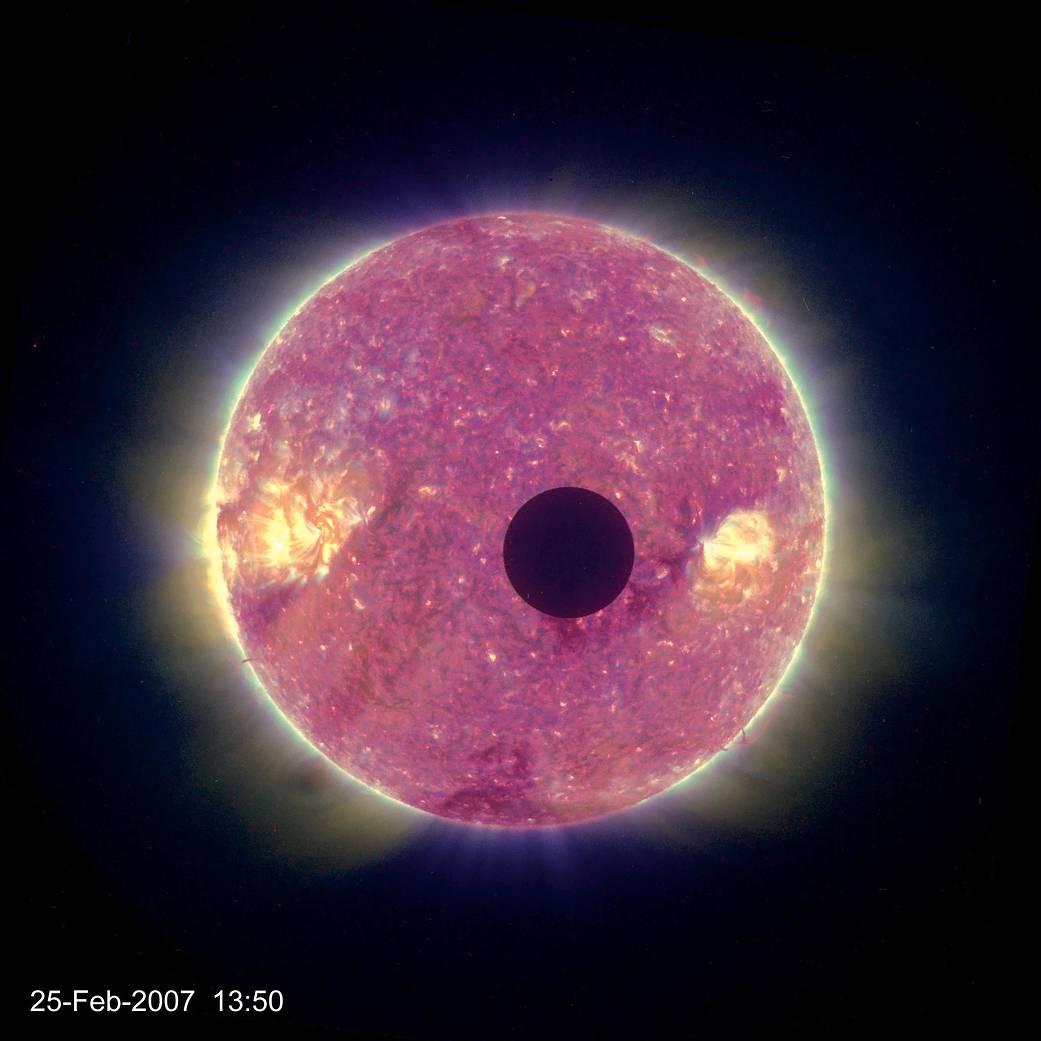This transit of the moon across the sun on Feb. 25, 2007, could not be seen from Earth. This sight was visible only from the STEREO-B spacecraft in its orbit about the sun, trailing behind the Earth.
NASA’s STEREO mission consists of two spacecraft launched in October 2006 to study solar storms. When STEREO-B captured this image, it was about one million miles from the Earth. That’s about 4.4 times farther away from the moon than we are on Earth. As a result, the moon appeared about 4.4 times smaller than what we are used to.
This alignment of STEREO-B and the moon was not just due to luck. It was arranged with a small tweak to STEREO-B’s orbit in December 2006.
The sun as it appears here is a composite of images in four different wavelengths of extreme ultraviolet light that were separated into color channels and then recombined.Image credit: NASA
1 min read

























